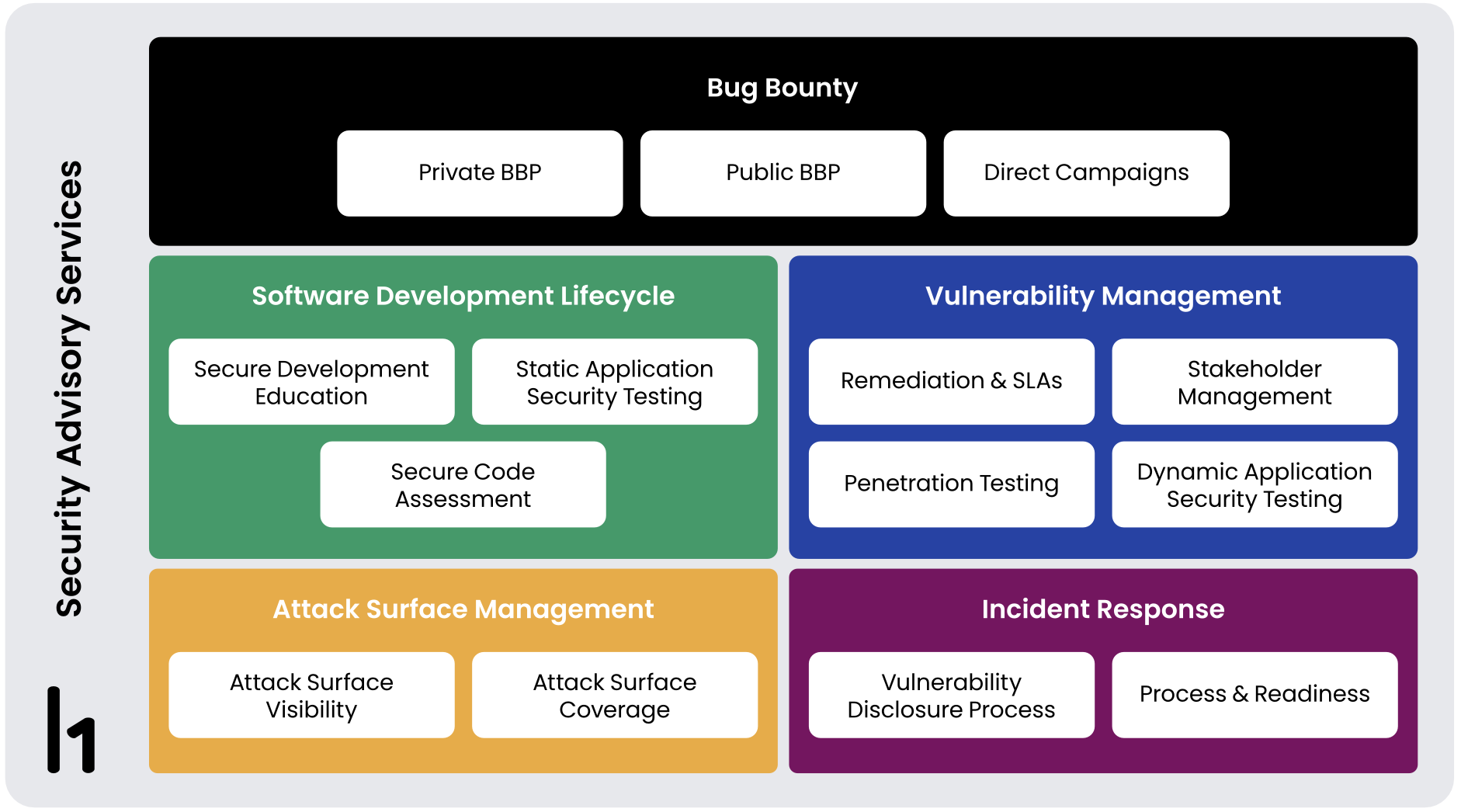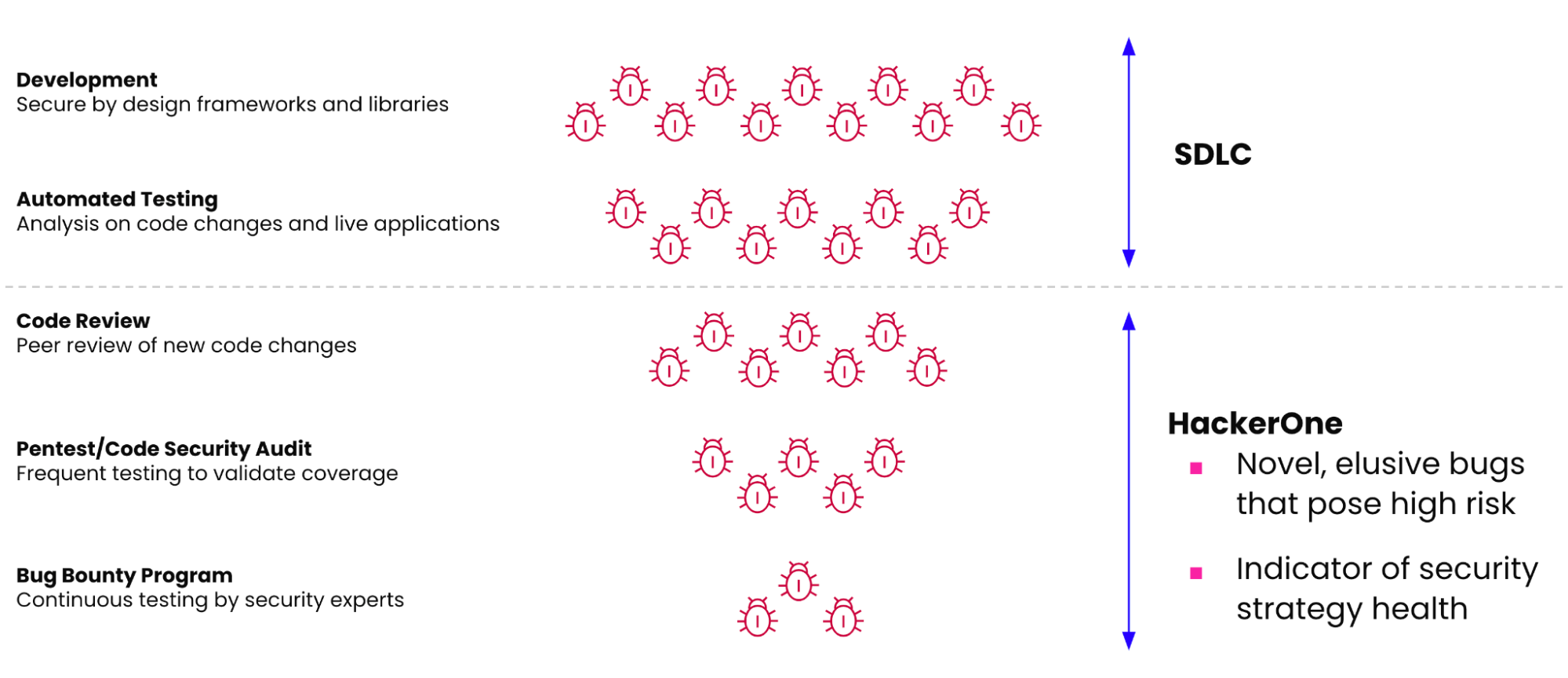Strengthening the SDLC with Security Advisory Services (SAS)

Over the decade that HackerOne has been helping organizations build a safer internet, we increasingly focus on customer experience, value creation, and new levels of efficiency. We see untapped potential in how customers use our HackerOne solutions every day, which inspired the creation of our latest offering: HackerOne Security Advisory Services (SAS).
What Is Security Advisory Services (SAS)?
Security Advisory Services (SAS) is a value optimization service designed to help our customers maximize the return on investment of their HackerOne solutions. A large component of a CISO’s mandate is managing the ability to resist attack. It is through this lens of attack resistance that we assess the security maturity of an organization’s attack surface. This produces a defined plan that enables our customers to integrate HackerOne findings into their broader security strategy and processes. With this approach, new levels of value are unlocked from our platform, beyond the risk reduction of finding and fixing vulnerabilities.
Our SAS customers have realized faster time to value, achieved more complete coverage of their attack surface, and elevated vulnerability awareness across the organization, reducing their exposure to threats.
SAS, in its essence, is a manifestation of our continuous improvement journey — a value optimization service crafted to help our customers maximize the return on their HackerOne investments.

Strengthening the SDLC with SAS
When identifying areas of trapped value, one realm stands out distinctly: the securing of the Software Development Lifecycle (SDLC). There is a clear connection between the results that HackerOne programs yield and their potential to fortify the SDLC. Outside of a few inspiring and well-resourced AppSec teams within our top high-tech customers, this feedback loop is often optimized.
With attack resistance programs, particularly continuous bug bounty programs, you are well attuned to the high-impact findings you receive from them. It acts as a final line of defense, catching bugs that have slipped through the cracks. Those cracks in your vertical security stack inevitably exist. Leadership coaches like to say feedback is a gift, and you should look at bugs as exactly that: feedback. Vulnerability reports can be an unexpected teacher pointing out improvements you can make elsewhere, including in processes, systems, or even cultures.
Security teams, often unknowingly, throw away this hidden feedback, resulting in a constant cycle of finding and fixing bugs. It’s like a game of whack-a-mole, where you are merely keeping up and making few net improvements. If you fail to act on what the data tells you, you miss opportunities for systemic improvements and leave significant value unrealized.
Organizations have the power to break free from this cycle and put program results to strategic use. By identifying and analyzing trends within the vulnerability data, our security advisory team helps integrate lessons learned back into your security approach. This helps direct improvement across different security domains, such as dynamic/static vulnerability scanning, vulnerability response, code review, penetration testing, developer security awareness, and more. The goal? Shorten a bug’s life and potential impact as much as possible.
Continuous optimization and improvement can rapidly grow security knowledge and increase attack resistance. With a robust security stack, a strong culture, and well-architected security processes, the bug bounty program will reach a maturity level where it brings in exclusively novel and elusive vulnerabilities.
By acting on the feedback and insights provided through continuous security, the trends of your bug bounty program can even serve as a performance monitoring tool for your security program and demonstrate improving security ROI.

Looking Ahead
If this post piques your curiosity about how HackerOne and our solutions can help you build a stronger, more proactive security strategy, connect with one of our experts today. In the meantime, check out our Security Advisory Services Solutions Brief to learn more.
If you're an existing customer curious about your optimization opportunities, contact your Customer Success Manager (CSM) to explore a complimentary consultation with the Security Advisory team.



